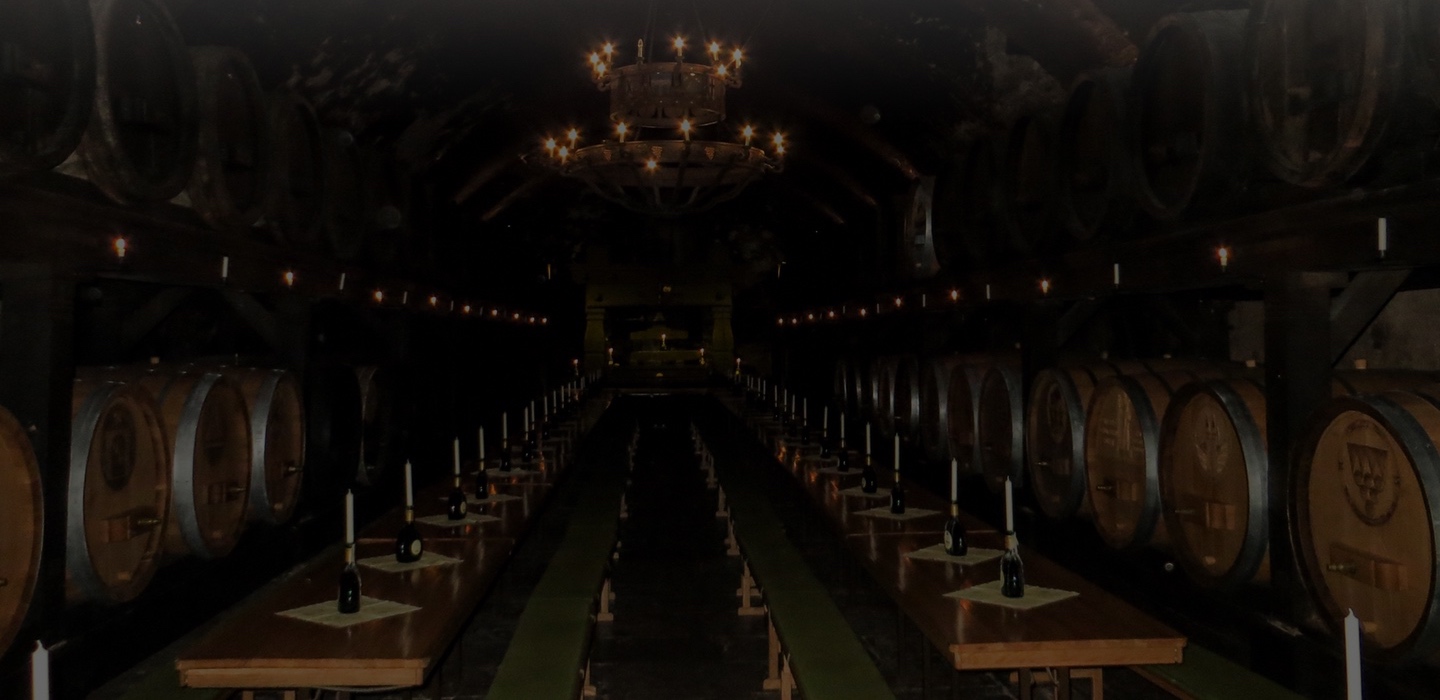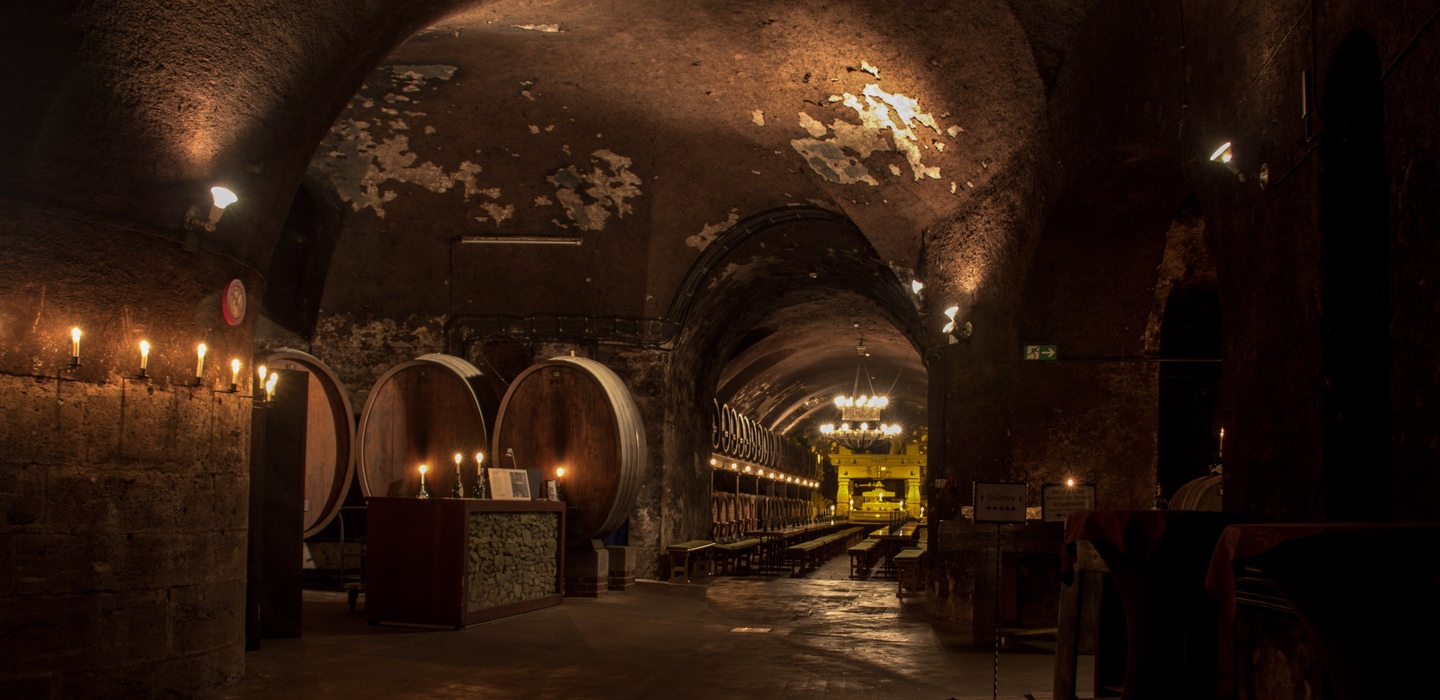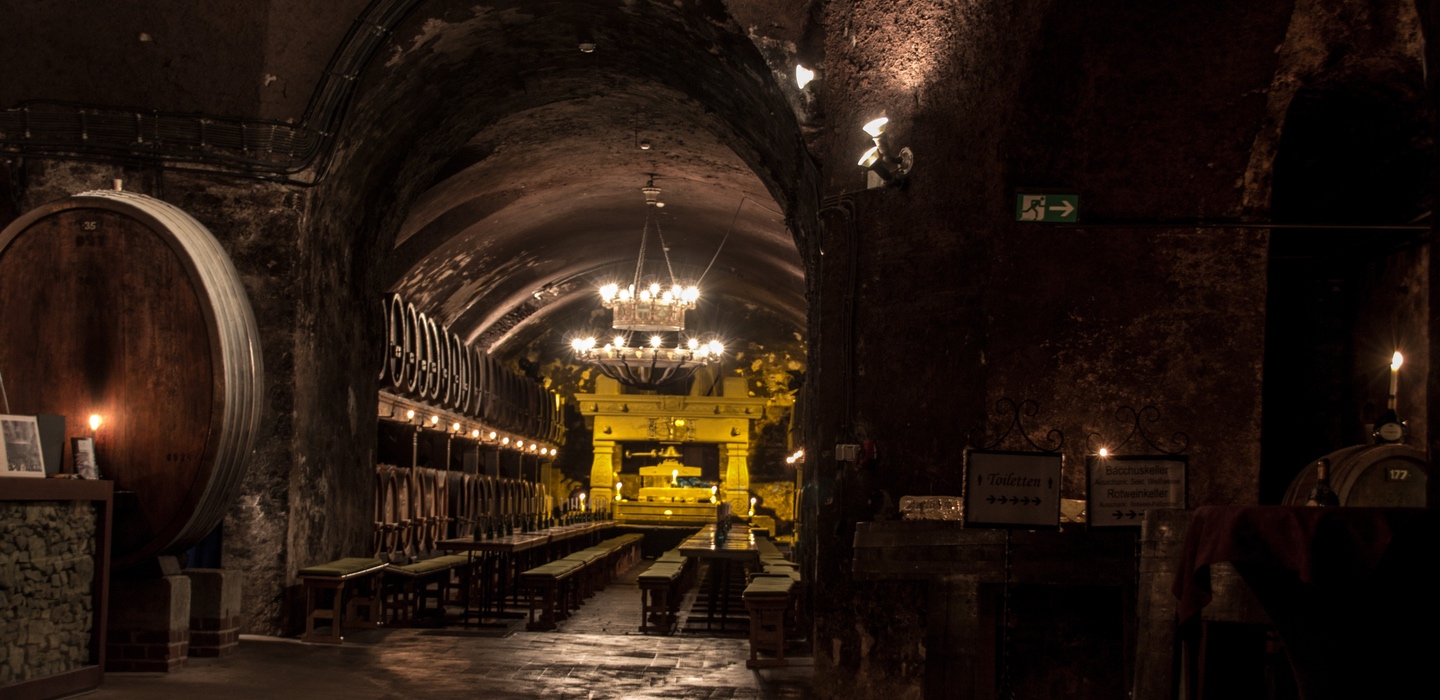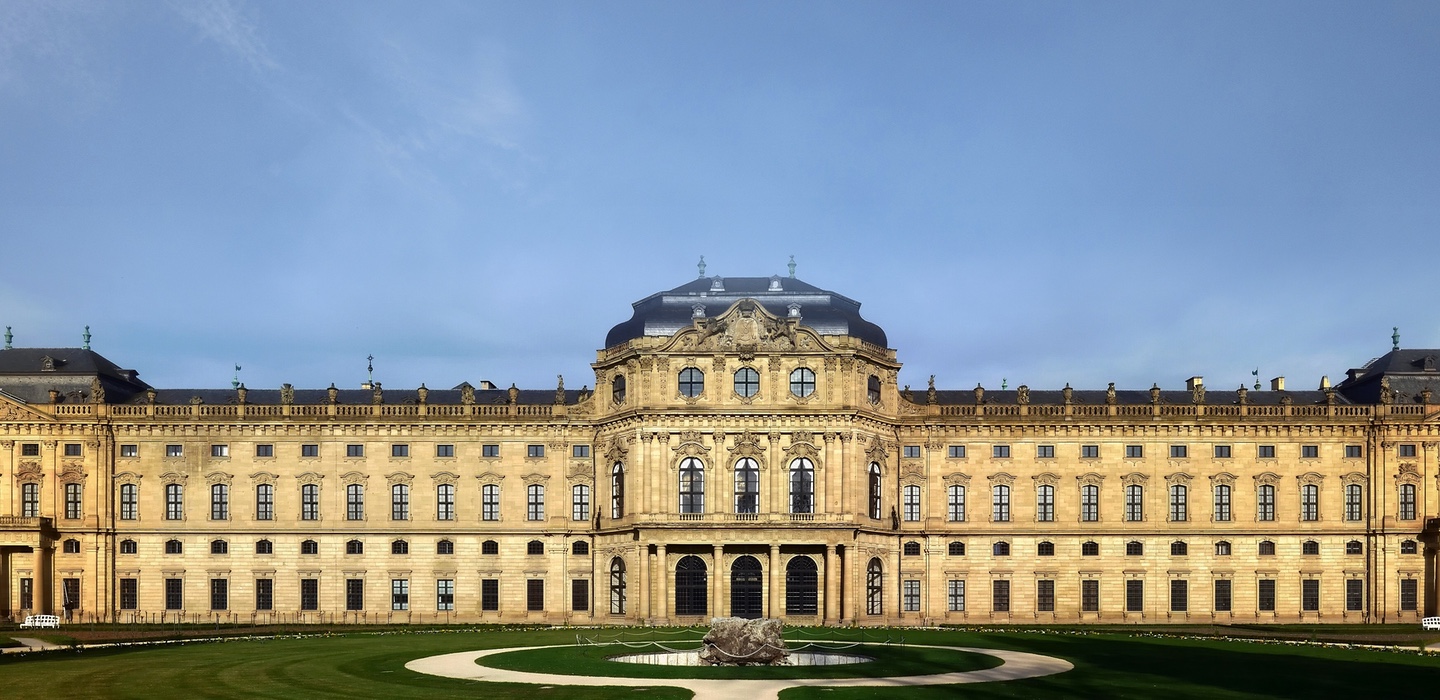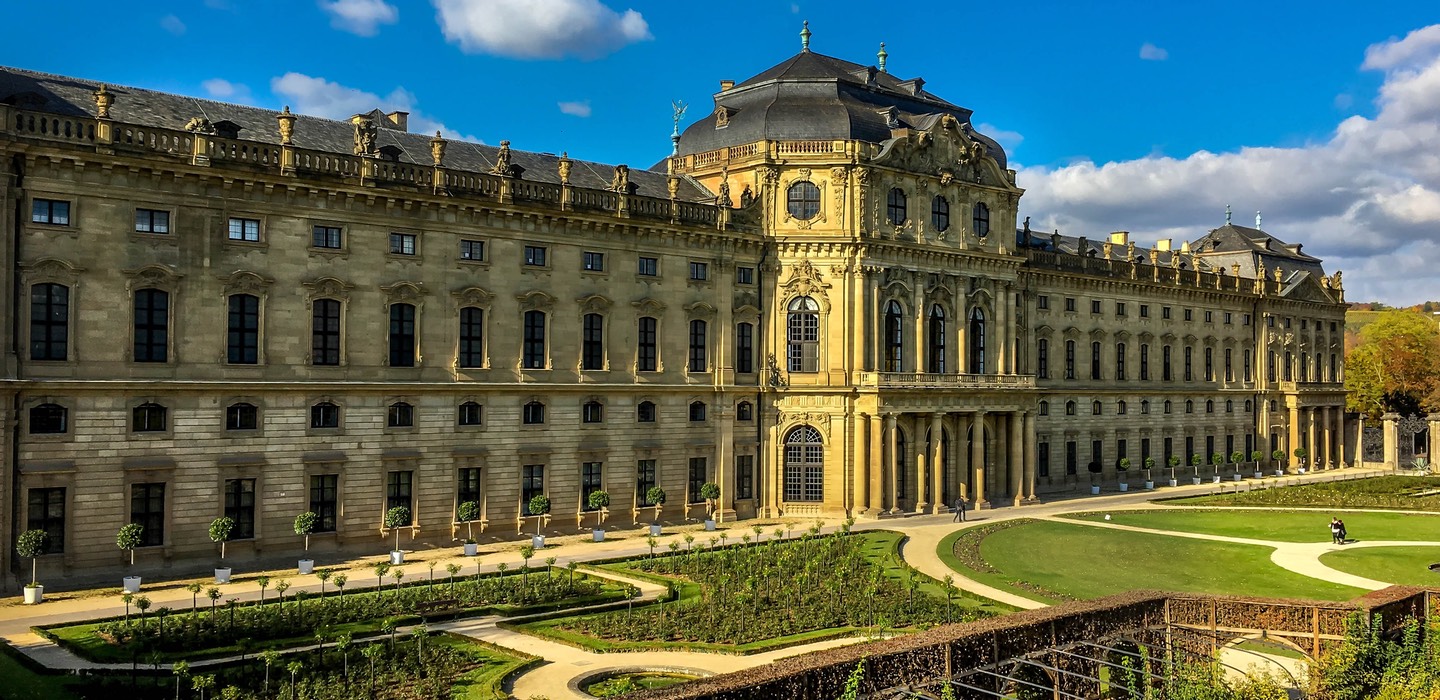The history of
Staatlicher Hofkeller Wuerzburg
A historic atmosphere and modern wine culture is harmonised in a smooth synergy at the Staatliche Hofkeller Würzburg.
The almost 900 years old cellar goes back to a donation certificate from the year 1128.
In 1814, the entire vineyard fell to the Bavarian crown and was called “Königlich Bayerischer Hofkeller“ (Royal Bavarian Wine cellar).
The end of the monarchy in Bavaria in 1918 led over to the autonomous Bavarian state winery Staatlicher Hofkeller Würzburg.
With this history, the Staatliche Hofkeller Würzburg is one of the oldest wineries in the world.
The heart of the wine estate is located in the City of Würzburg.
The beautiful “Rosenbachpalais” of the Würzburg Residenz is the operational center of the state winery.
With the aim to care the nature and to be environmental friendly the vineyard is constantly optimising the wine growing and harvest as well as the wine production.
Which leads to unique and outstanding wines.
They offer a varied, characteristic and unique wine-tasting with exquisite products of the international top class.
- Acreage
- 120 acres
- Bottles per Year
- 850,000
- Soil types
- 55% Shell Limestone, 22% Gipskeuper, 15% Sandstone, 8% Limestone
- Vineyard locations
- Würzburger Stein, Handthaler Stollberg, Hörsteiner Abtsberg, Großheubacher Bischofsberg
- Planted
- Silvaner, Riesling, Rivaner, Spaetburgunder (Pinot Noir), Weissburgunder (Pinot Blanc), Domina, Bacchus, Rieslaner
- Notes
- Sustainably Farmed
Rieslaner
Silvaner x Riesling, a new breed of the Bayerische Landesanstalt by Dr. Ziegler 1921, “rediscovered” by Prof. Breider 1950, temporarily called “Mainriesling”; Predestined for high-quality, storable predicate wines; Intensive, fresh fruit-flavored wines with exotic aromas.
Riesling
The most traditional, most valuable and internationally most important German white wine grape variety;
Very high requirements, very late maturity;
Stimulating and sustainable Riesling wines are characterised by “incomparable quality”,
ripe acidity, elegant elegance, fruity,
often peach and apricot-like aromas – the “king of white wines”
Silvaner
One of our oldest grape varieties, the “character grape variety” of Franconia.
Authentically documented in Franconia since 1659 and in the Würzburger Stein for the first time planted in 1965.
Medium to high positional requirements, maturation time medium late;
Silvaner wines are characterised by their naturalness, balance, minerality, diversity, “personality” and sustainability
Bacchus
Silvaner x Riesling x Müller-Thurgau, early maturity, named after the Roman winery “Bacchus”;
Flowery, spicy, fruity wines with subtle fruit acidity
Rivaner
Also known as Mueller-Thurgau is a crossing of Riesling with Madeleine Royale created by the Swiss botanist
Dr. Herman Müller in 1882.
Rivaner vines mature early and bring large yield quantities they are mild due to low acidic content yet very refined,
fresh, often subtly muscadily, fruit-flavored.
They may be drunk while relatively young, and with few exceptions are not considered to improve with age.
Weissburgunder (Pinot Blanc)
The Pinot blanc grape is a mutation of the Pinot noir grape.
In Germany it is called Weissburgunder (lit „White Burgundian“).
German Pinot blancs are typically very rich with a piquant fruit acid and fine bouquet.
Bottles that are varietally pure, provide stronger floral characteristics,
stone fruits and a headier minerality.
Spätburgunder (Pinot Noir)
Pinot Noir grapes are grown around the world, mostly in the cooler climates.
In Germany it is called Spätburgunder (lit. “Late Burgundian“).
It has very high demands on the location, in Franconia especially loves the warm Buntsandstein layers.
Young Pinot Noir tend to have red fruit aromas of cherries, raspberries and strawberries.
As the wine ages, Pinot has the potential to develop more vegetal and “barnyard”
aromas that can contribute to the complexity of the wine.
Despite the northerly climate in Germany darker, richer reds have been produced, often barrel (barrique) aged.
These are rarely exported and are often expensive in Germany for the better examples.
German Pinot noir is mentioned several times in Shakespearean plays as a highly prized wine.
Domina
A cross breed of the „blauer portugieser” and „pinot noir”,
created 1927 by the German viticulturalist Peter Morio Domina wines are full-bodied,
dark red and rich in tannin.
In 2006, there were 395 hectares (980 acres) of Domina in Germany with most of them in Franconia.
Staatlicher Hofkeller Wuerzburg
Location
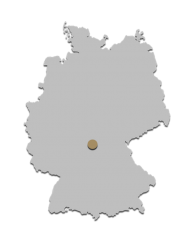
Along the course of the Main River you can find mainly four different types of soil.
The wines of the Staatlichen Hofkeller benefit from all four geological formations which serve as the basis for their wines.
They are alive and delicate in the limestone of the Untermain (Hörsteiner Abtsberg), elegant and earthy on shell-limestone around Würzburg (eg Würzburger Stein), strikingly fruity on Gipskeuper in Steigerwald (eg Handthaler Stollberg) and on warm sandstone in the Mainviereck Thriving red wines of the Hofkeller (eg Großheubacher Bischofsberg).
Distribution by
